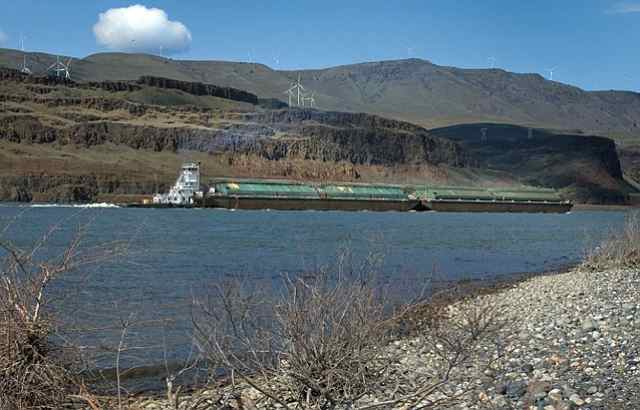forum
library
tutorial
contact

Details of Oil Spill
Response Plan Questioned
George PlavenThe Dalles Chronicle, September 11, 2015
|
the film forum library tutorial contact |

|
Details of Oil Spill
George Plaven |
 An Ohio-based consulting firm says the plan meant to guide oil spill response on the Mid-Columbia River lacks "actual planning" and details needed to be useful in case of an emergency.
An Ohio-based consulting firm says the plan meant to guide oil spill response on the Mid-Columbia River lacks "actual planning" and details needed to be useful in case of an emergency.
State and federal agencies recently updated the Mid-Columbia Geographic Response Plan for the first time since 2004 to account for a sharp rise in crude-by-rail across the Pacific Northwest.
But Joel Hogue, with Elemental Services & Consulting in Columbus, Ohio, said the plan misses the mark on tactics and training to clean up a potential oil spill quickly and efficiently.
Hogue submitted 10 pages of comments to the Washington State Department of Ecology questioning how the plan would be implemented in the event of an actual spill. As it is, the plan is too big and makes too many assumptions to ensure the river is protected, Hogue said.
"It all boils down to tactics," Hogue said. "At the end of the day, all anybody cares about is getting that oil out of the water."
Geographic Response Plans, or GRPs, are site-specific documents published under the umbrella of the Northwest Area Contingency Plan, which guides oil spill response in Oregon, Washington and Idaho.
The Washington Legislature allocated money to the Department of Ecology in 2014 to update the Mid-Columbia GRP based on a rise in oil trains traveling along the river. The Oregon Department of Environmental Quality, U.S. Coast Guard and Environmental Protection Agency are also involved in planning and working with first responders throughout the region.
Harry Chichester, lead planner with the state of Washington, said this hierarchy creates a unique partnership whereby agencies and contractors are all on the same page.
"Our goal is to try to reduce injury to sensitive resources," Chichester said.
After reviewing one section of the plan covering the river between The Dalles and John Day dams, Hogue raised a number of points about the strategies prescribed for containing oil -- mostly related to how oil absorbing booms are deployed in the water.
The data gets highly technical, involving the angle of booms compared to the river's velocity, width and depth carrying oil. Yet this is the level of detail needed to make sure the response happens quickly to save money and resources, Hogue said.
"Spill plans tend to lack that detail, and consequently things don't go as well as they could be," he said.
Hogue said he's been in the oil spill business for 20 years now, and Elemental Services' clients include several pipelines and refineries. He only submitted comments to try and help protect the area, which he said is "exceptionally deserving of protection."
In general, he said the 1,169-page GRP is too large to be effective, makes no reference to the training and preparedness of responders and leaves crews to make assumptions about how far oil will travel before they can start containment.
"When it comes to execution, you have to know what you're doing," Hogue said.
Chichester responded to comments in a document since posted to the Mid-Columbia GRP website. He said auditing contractors for readiness falls outside the scope of the plan, but the Northwest Area Committee vets the plan through contractors likely to be hired in case of a spill.
As far as cleanup tactics, the plan is split up into four parts marked by the areas downstream of Bonneville, The Dalles, John Day and McNary dams. Within each pool, the plan identifies locations where personnel can stage and what resources they need to protect.
Each specific location includes a two-page overview with field notes, recommended equipment, maps and instructions for deploying oil booms. However, Chichester said it is also important to allow some room for responders to make their own determinations based on conditions that could change.
"We want to give directions in the two-pagers, but we also want responders to use their brains, common sense and judgment," Chichester said.
In addition, the Columbia River's flows are regulated by the dams, and because of that Chichester said the water acts more like a lake or reservoir, which alters the oil's trajectory.
Chichester is confident the math worked out in the updated GRP is accurate for placing booms to protect fish, wildlife and infrastructure.
"Each one of the strategies are in place because we think they have a chance of working on the day something bad happens," he said.
The entire updated Mid-Columbia GRP can be found online at www.ecy.wa.gov.
learn more on topics covered in the film
see the video
read the script
learn the songs
discussion forum
